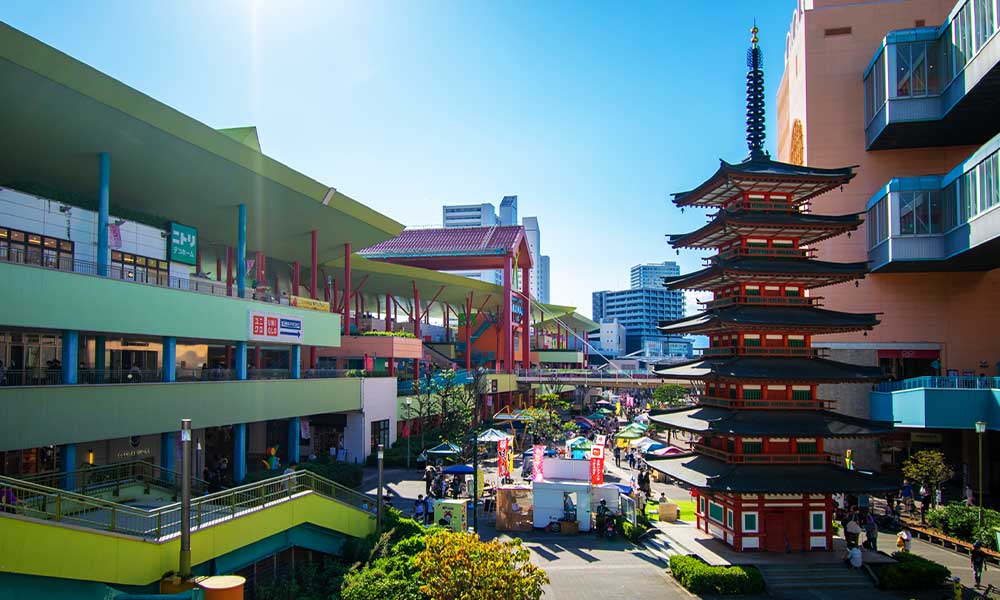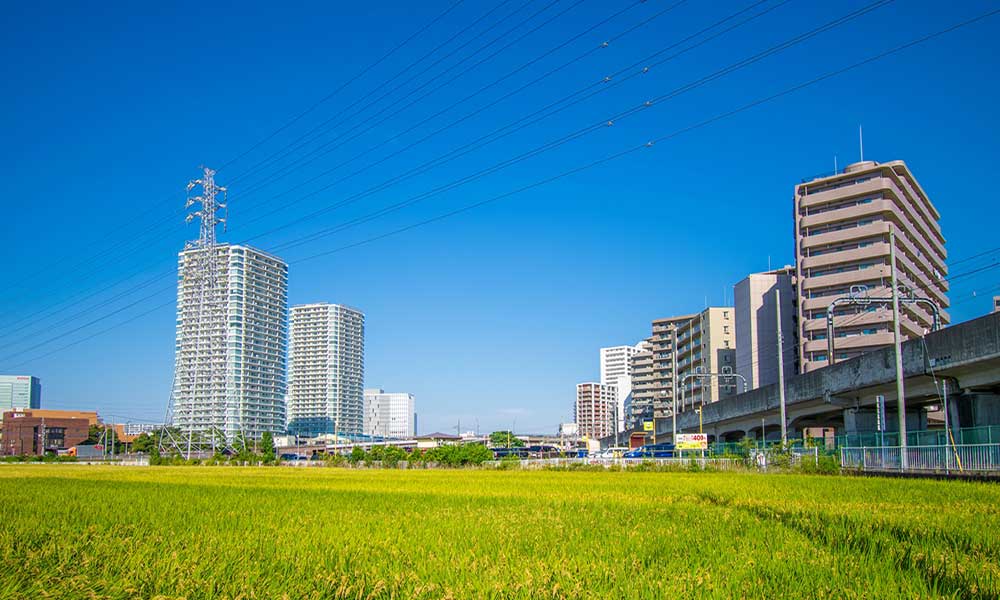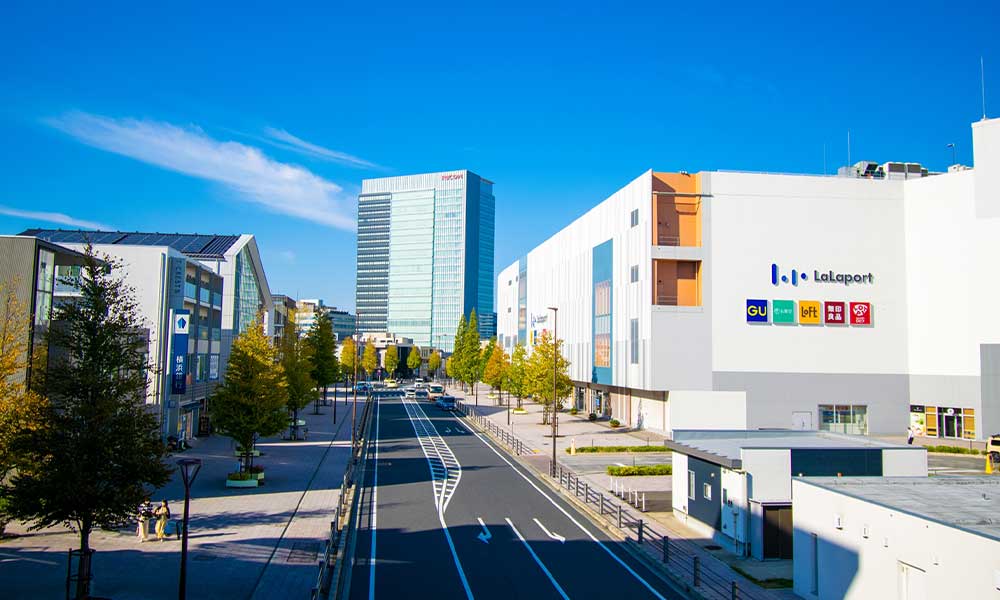Ebina City, Kanagawa神奈川県海老名市
Living in Ebina City, Kanagawa

We have Summarized the livability of Ebina City, Kanagawa.
CENTRAL PREFECTURE AREA県央地域
CONTENTS
- What kind of place is Ebina City?
- Ebina CityPR video
- How is the traffic situation in Ebina City?
- How are the rent and land prices in Ebina City?
- How is childcare and education in Ebina City?
- How about shopping in Ebina City?
- How about jobs and recruitment in Ebina City?
- Ebina City’s unique subsidy/subsidy system
What kind of place is Ebina City, Kanagawa?

Ebina City is a city that is gaining attention as a commuter town for Tokyo and Yokohama.
Ebina City is located almost in the center of Kanagawa Prefecture. It borders Zama City to the north, Ayase City to the east, Samukawa Town to the south, and Atsugi City to the west.
The population is approximately 139,000, and the number of households is approximately 60,000. (As of December 2022)
You may have heard of the Ebina Service Area, which has won first place in various rankings and is one of the largest in the country.
The Ebina Service Area is known as one of the largest expressway service areas in the country.
You can also buy Ebina Melon Bread, which has been certified by the Guinness World Records for sales volume, at the service area on the outbound side.
It is 20 km from Yokohama and 50 km from Tokyo, and due to its convenient transportation, it has been attracting attention in recent years as a bedroom town for Tokyo and Yokohama, and its population is on the rise.
Looking around, you can see the idyllic landscape of spreading countryside and the ruins of Sagami Kokubunji Temple. Ebina City is characterized by its diverse townscape where agriculture, urban housing, and history coexist.
PR video of Ebina City, Kanagawa
Ebina City’s 50th Anniversary Video – Past, Present, and Future
Ebina City Youth Settlement Promotion Project Promotion Video
How is the traffic situation in Ebina City?

Ebina City is a convenient city with three train lines at Ebina Station.
Ebina City is served by three lines: Odakyu Electric Railway, Sagami Railway, and JR Sagami Line.
There are seven stations: Ebina Station, Atsugi Station, Kashiwadai Station, Sagamino Station, Atsugi Station, Shaka Station, and Kadozawabashi Station.
Ebina Station is particularly convenient as it is a transfer station for three lines, and the area in front of the station is prosperous. It is the terminal and starting point of the Sagami Line, so it is relatively easy to secure a seat even during the morning commute. You can reach Yokohama in as little as 27 minutes without transfers, and Tokyo in as little as one hour with one transfer.
Bus services are also popular, and there is a limousine bus that runs directly from Ebina Station to Haneda Airport.
Kanagawa Chuo Kotsu and Sotetsu Bus run regular buses, and Ebina City runs a community bus to provide transportation for the residents.
The fare for the community bus is set at 150 yen for adults and 80 yen for elementary school students and younger. Transportation IC cards can also be used, and up to two infants can travel free of charge per adult.
Previously, if you wanted to use the expressway by car, you had to go to Atsugi City, but with the completion of the Ken-O Expressway, an interchange was built in Ebina City, making it more convenient.
There are many options for transportation, including trains, buses, and cars, making it a convenient city to live in.
It is easy to get to both Tokyo and Yokohama by train. The Sotetsu Line is the starting point, so you can sit down and go to Yokohama. Since the Ken-O Expressway was built, access to the expressway is good and you can travel long distances without stress.
Ebina Station is extremely crowded on all three lines during rush hour. In particular, there is a lot of traffic congestion around the station in the evenings and on weekends.
How are the rent and land prices in Ebina City?
Ebina City: The difference in land prices is huge even within the same city
The average rent in Ebina City is said to be high around Ebina Station, at about 65,000 yen.
Around Atsugi Station, it is about 62,000 yen, and around Sagamino Station, it is about 60,000 yen.
Also, around Ebina Station, a one-room apartment is about 89,000 yen, and a 2LDK is about 152,000 yen, which is not much different from the average rent in Tokyo.
In terms of land prices, the average price for Ebina City as a whole is 621,000 yen per tsubo, ranking 29th among the 56 cities and towns in Kanagawa Prefecture (as of October 2022).
By the way, it is ranked 155th out of 1,526 cities and towns nationwide, so it can be seen that land prices are relatively high nationwide.
Even within the same Ebina City, there is a range depending on the area, with the highest price being Chuo 1-chome, where the price per tsubo is 2,727,000 yen, and the cheapest being Nakagawachi Nakamichi, where the price per tsubo is 203,000 yen.
How is childcare and education in Ebina City?

Ebina City: A city where you don’t have to worry about medical expenses until you graduate from junior high school
In Ebina City, there are 12 daycare centers, 8 kindergartens, 13 elementary schools, 6 junior high schools, 3 high schools, and 1 vocational school. There are no junior colleges or universities in the city.
The Children’s Medical Expense Subsidy in Ebina City covers both outpatient and inpatient treatment for children up to 18 years old (until March 31 of the year they turn 18) and is fully subsidized.
Additionally, as a child allowance, ¥15,000 is provided for children under the age of 3; ¥10,000 for the first and second children between the ages of 3 and the start of elementary school, and ¥15,000 for the third child and beyond; ¥10,000 is provided for junior high school students.
Ebina City is said to be one of the most child-friendly cities in Kanagawa Prefecture.
Not only is it a city filled with nature, but medical care for children is free for both inpatient and outpatient care until they graduate from junior high school, with no income restrictions.
In addition, there are plenty of child-rearing facilities, such as child-rearing support centers that encourage interaction between parents and provide advice, providing an environment where parents who often have worries and concerns can raise their children with peace of mind.
Ebina City: A city where you can raise your children while being in contact with nature
The development around Ebina Station is remarkable, giving it an urban feel. However, just a step away, you can find the ruins of Sagami Kokubunji, where you can experience both history and nature.
A 15-minute walk from Ebina Station takes you to the Sagami River, and at the ‘Kanagawa Prefectural Sagami Sansen Park‘, you can enjoy not only sports but also river play, barbecues, and other activities that allow you to fully immerse yourself in nature.
Additionally, you can go fishing for ayu (sweetfish), making it a precious spot where children can have valuable experiences at a young age.
There is a wide range of childcare support and subsidies available, making it an easy environment to raise children in. Except for the area around the station, there is plenty of nature and parks, making it a peaceful place to raise children.
There are few cram schools and preparatory schools, so many students commute to other areas by train.
How about shopping in Ebina City?

Ebina City: A city where you can find everything you need for daily life just by going to Ebina Station
If you’re thinking about shopping in Ebina City, the relatively new and popular spot ‘Lalaport Ebina‘ is highly recommended.
This large shopping complex consists of around 260 stores, including fashion and dining options, and is directly connected to the west exit of Ebina Station, making it extremely accessible.
It’s perfect not only for family shopping but also as a date spot where you can enjoy an entire day.
On the east side of the station, you’ll find large stores and massive complexes such as ‘Vina Walk‘, ‘Aeon Ebina‘, Shoppers Plaza Ebina, and Yamada Denki. These stores offer not only household items but also electronics, medical services, and even a movie theater, so you can take care of almost all your daily needs around Ebina Station.
Though not a shopping spot, the ‘Ebina Central Library‘ was renovated in 2015 and has transformed into a facility that breaks the traditional concept of a library. With a Starbucks, outdoor terrace, and a kids’ area, it has become a comfortable space and a new popular destination in the city.
The area around Ebina Station is well-developed. There are many shopping complexes directly connected to the station or within a 5-minute walk from the station, so you won’t have any trouble shopping.
There are many shops around the station, but there are fewer shops a little further away.
How about jobs and recruitment in Ebina City?
Ebina City: A city where you can work both locally and in other areas
According to data, the average annual income for full-time employees working in Ebina City is 3.69 million yen, while the average hourly wage for part-time and casual workers is 1,098 yen.
The average hourly wage for temporary workers is 1,419 yen.
Looking at the average annual income for full-time employees alone, it tends to be low within Kanagawa Prefecture, and it can be said that there is a tendency for many people to move to the city center to work as a commuter town.
However, the range of annual income is wide, from 2.62 million yen to 6.37 million yen, so it can be said that income differences are likely to appear depending on ability and industry.
You will have more options, whether to move to the city center or work in Ebina City.
Ebina City, Kanagawa’s unique subsidy/subsidy system
Ebina City, Kanagawa’s unique housing assistance and subsidy system
Ebina City, Kanagawa’s unique childcare support system
| Childcare and child development support program Subsidy for after-school childcare fees Full subsidy for textbook fees (for first-year elementary and junior high school students) |
Ebina City, Kanagawa’s unique system for further education and tuition assistance/subsidies
| v Payment of supplies for new students before enrollment |









